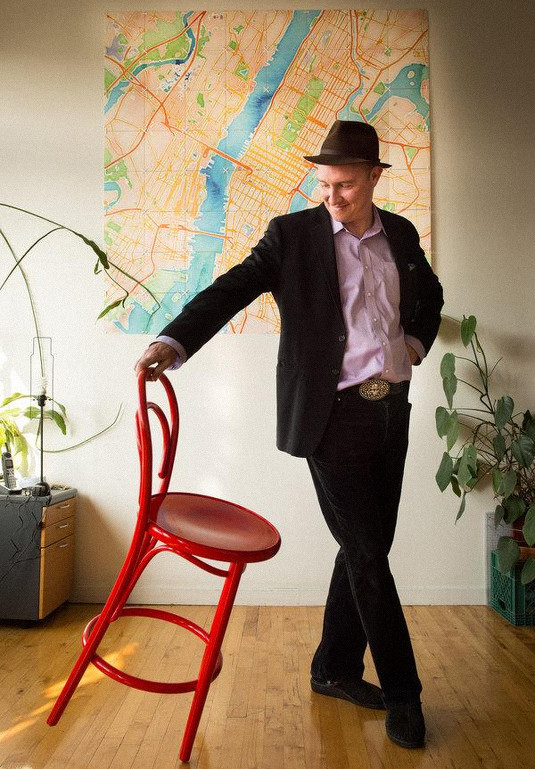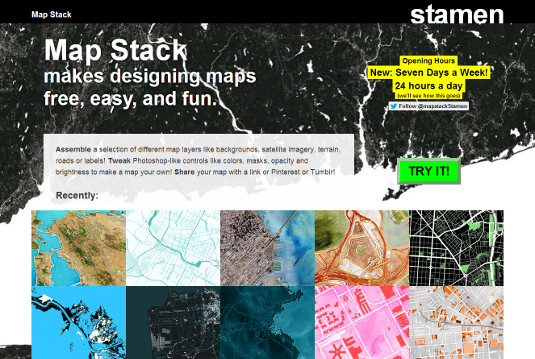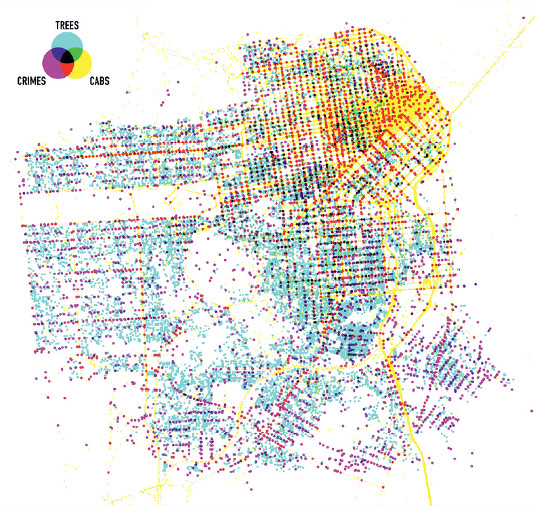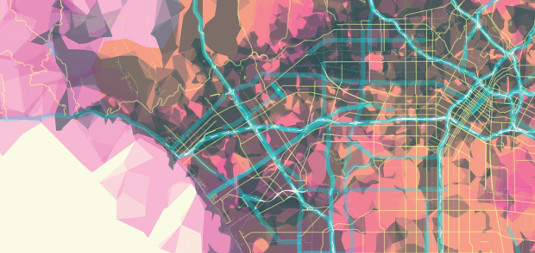The future of data-driven design
Stamen Design founder Eric Rodenbeck reflects on the endless potential for innovative design with data.

Hailed as the world's most innovative design company by Fast Company magazine in 2011, San Francisco-based Stamen Design specialises in making big data beautiful, with a particular focus on how maps can communicate complex information in an aesthetically pleasing way.
One such example is Map Stack, which enables anyone to create a colourful, engaging map image right in their browser, by layering backgrounds, road plans or satellite imagery with visualisations of different Open Street Map data - and then manipulating colour, opacity and masking using the controls provided. We spoke to Stamen's founder about the rewards and challenges of data-driven design.

What's the most exciting and innovative aspect of how you work?
We think of new ways to ask questions about data, and how we can design with data to get the viewer and our clients to ask new questions. We like to allow data to show what will form organically, without trying to force the message. It's through this openness and curiosity that new ideas emerge, and that's perhaps the unpredictable space where innovation lives.

Why is innovation important to the design industry?
New ideas and concepts are important, but too often in design we see people try to reinvent the wheel or the bar chart when, in fact, they don't need to. That said, design is all about process. Working together with partners, designers, engineers and stakeholders to arrive at an artefact that creatively responds to a need, challenge or problem.
As designers, we constantly seek to make the world more beautiful, to make information easier to understand, to improve something. Innovation naturally comes out of that.
What role does data play in the future of interactive design?
Too often it's assumed that data is itself some objective thing, and that if we can just harness it and visualise it then voilà - we will understand the world and our bodies and lives, and transcend our current existence into a better way of being. The truth is that data is a representation of information. It is in no way objective. Sometimes it's downright boring. That said, data plays an important role in design. At Stamen, we handle it as if it is clay with a materiality all of its own.

What are the main challenges you face working in this field?
Designing with data adds an additional layer of complexity to any project, which may be pure joy or pure hell. Sometimes a client's data doesn't tell the story they thought it would. We can't stress enough the need for open data. It's unfortunate that so many companies are inclined to collect data, and then not share it with the public for analysis and design. Innovation often comes from unusual places, and without openness, it's a lot harder to make happen.
Daily design news, reviews, how-tos and more, as picked by the editors.
Words: Andreas Markdalen
This article originally appeared in Computer Arts issue 228.

The Creative Bloq team is made up of a group of art and design enthusiasts, and has changed and evolved since Creative Bloq began back in 2012. The current website team consists of eight full-time members of staff: Editor Georgia Coggan, Deputy Editor Rosie Hilder, Ecommerce Editor Beren Neale, Senior News Editor Daniel Piper, Editor, Digital Art and 3D Ian Dean, Tech Reviews Editor Erlingur Einarsson, Ecommerce Writer Beth Nicholls and Staff Writer Natalie Fear, as well as a roster of freelancers from around the world. The ImagineFX magazine team also pitch in, ensuring that content from leading digital art publication ImagineFX is represented on Creative Bloq.
